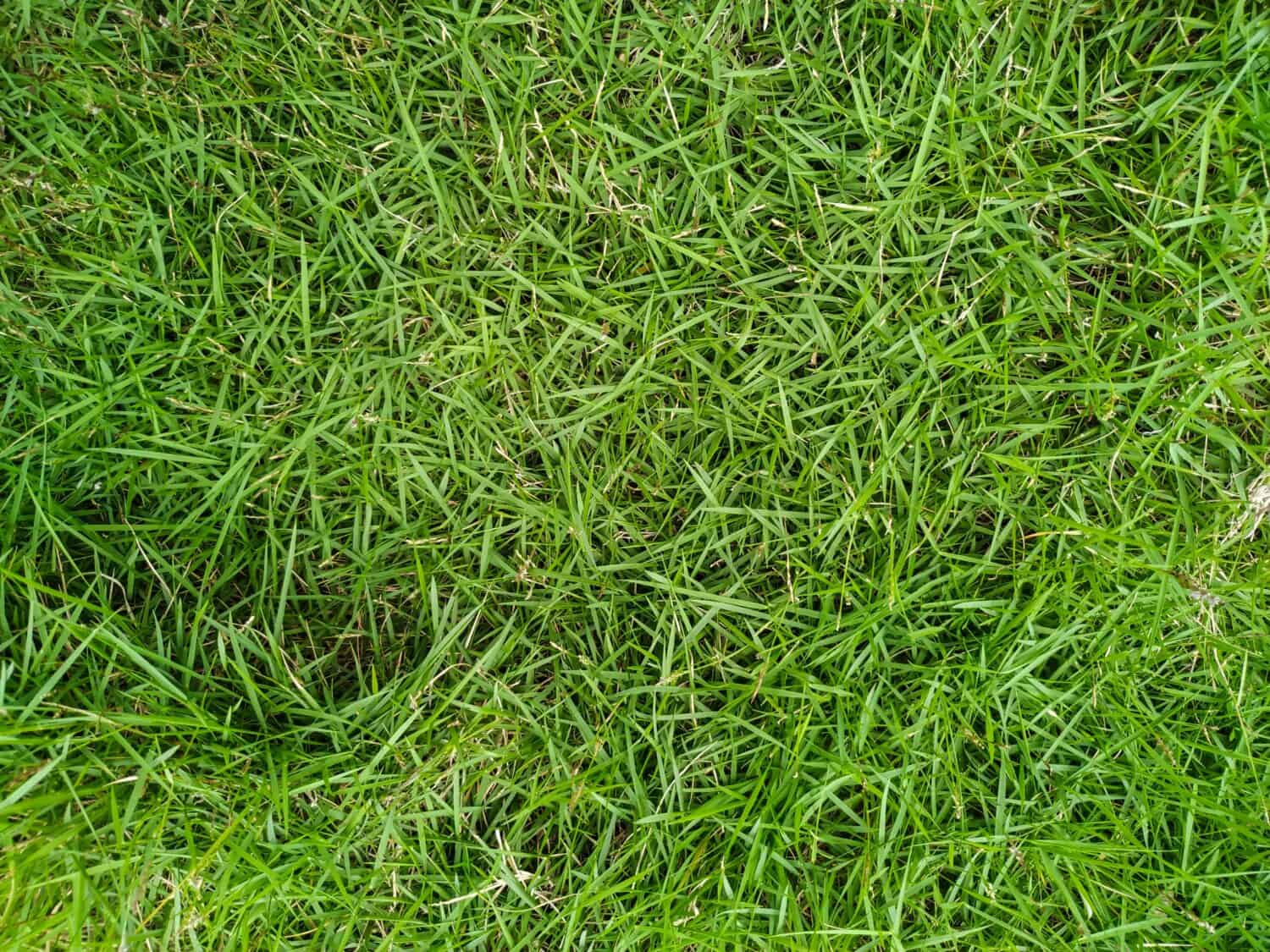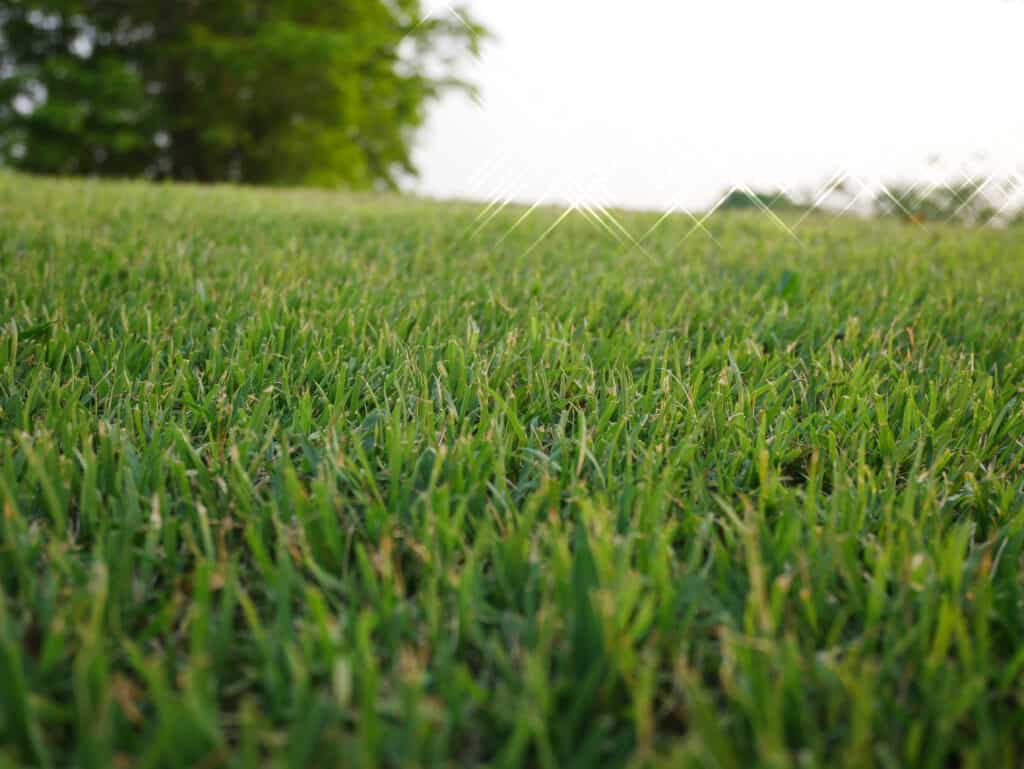There are over 12,000 different kinds of grass in the botanical family Poaceae, over 100 of which are used as turfgrasses in the United States. Because of this, it can be difficult to make a choice on which variety will best suit your needs. There are multiple factors to consider, including the climate you live in and the type of soil that exists in your growing area. While most lawn and turf grasses are cool season varieties, it is advantageous to consider warm season grasses when making your choice. These varieties offer many benefits in comparison to their cool season contenders, especially in climates that are consistently hotter and drier.

©Yanti Lin/Shutterstock.com
Zoysia grass and Bermuda grass are both sturdy, warm season turfgrasses, but which is better for you? This guide will walk you through their similarities and differences, along with teaching you about the origins and uses of both plants.
Comparing Zoysia Grass and Bermuda Grass
Key Differences Between Zoysia Grass and Bermuda Grass
Both of these turfgrasses are excellent for use as low-growing perennial lawns, as they form dense, lush mats that can handle heavy traffic and drought. Now, let’s explore some of their larger differences.
Zoysia varieties grow in USDA Zones 5-10, while Bermuda grass thrives in Zones 7-10. This is important to note, especially when planting in transitional climates. Zoysia grows in a wider variety of climates because of its ability to withstand cooler temperatures and less sun. Bermudagrass requires full sunlight and warm temperatures.
Zoysia grass has an intricate rooting system, which causes it to grow more slowly, while Bermudagrass is fast-growing, deep-rooting, and able to recover quickly after heavy wear. Another key difference is in planting. Very few varieties of Zoysia grow from seed and are usually planted in plugs. Depending on the variety, Bermudagrass can be germinated from seed or planted from plug.
Classification
All true grasses come from the family Poaceae and have a distinct genus or species. Zoysiagrasses are not a singular species, rather, Zoysia describes a Genus that covers a variety of species. The most common species of this plant are Zoysia matrella, Zoysia japonica, and Zoysia tenuifolia.
Bermudagrass is a singular species, known as Cynodon dactylon, with a variety of hybrids and cultivars under the species name.
Description

©Joyjiraporn/Shutterstock.com
Zoysia is a sod-forming perennial creeping grass that grows in a thick, vibrant patch. It spreads using both rhizomes (underground root systems) and stolons (root systems that grow above ground). The underground root system reaches depths of up to two feet. The texture of this plant varies based on species, climate, and care. A high silica content causes the blades of the grass to be stiff, but the texture of each species varies from very fine to moderately coarse. Each blade is smooth, with a sharp point and flat edges.
Bermudagrass is also a perennial creeping grass, and spreads using rhizomes, stolons, and seeds. It has a distinct seedhead that branches out to resemble a bird’s foot. The leaf blade is smooth and sword-like, and the texture ranges widely from fine to coarse. The rooting system of Bermudagrass is impressive – reaching depths of up to six feet – and produces new roots through the entire growing season.
Uses
Zoysiagrass is a highly adaptive species of grass, which makes it desirable for a variety of uses. Its tolerance to heat, drought, and cold, along with its low maintenance needs, make it a perfect lawn grass. It can grow in all sorts of soils, including sandy conditions with high salinity. For this reason, its an ideal choice for coastlines and for erosion control. Its tolerance to cooler weather is good for growing through the transition zone of the United States, as turf and for stock grazing. Its hardiness gives it good use in high-traffic areas such as golf courses and parks, but it is slow to regenerate and not recommended for higher-traffic athletic fields.
Bermudagrass is a fantastic lawn grass but has a wide variety of uses outside of that. for high-traffic areas, from parks to athletic stadiums to coastlines. The hardiness of this grass-to-foot traffic has made it a first pick for many sports teams, including the Arizona Cardinals, Baltimore Ravens, and Tennessee Titans.
Bermudagrass is also used for religious and medicinal purposes. In India, the grass is used as a sacred offering during festivals. In Nepal, it is believed to represent long life and is worn by both bride and groom during wedding ceremonies. Medicinally, it is known to have antiseptic and anti-inflammatory qualities.
Origin
Zoysiagrass originates from China, Southeast Asia, and the Pacific Islands. Karl von Zois, an 18th-century Austrian botanist, is the namesake for this grass, though it was first described by the botanist Carl Linnaeus in 1753. Around 1895, Zoysia japonica came to the United States from its native home in the Manchurian region of China. In 1911, another botanist by the name of Charles Vancouver Piper introduced Zoysia matrella (Manila grass) to the United States by way of Manila, the capital city of the Philippines.
Bermudagrass is originally native to Africa, Asia, and much of Europe. While it is not known exactly when it was introduced to the United States, it is mentioned in an 1807 publication about principal grasses in Southern States. Despite being named after Bermuda, it is considered highly invasive to the territory, and to the surrounding archipelago.
Growing
Zoysiagrass makes a fantastic lawn grass in both warm and cold climates. It is also tolerant to some shade, but it grows best with at least six hours of sunlight every day. Its ability to hold up to drought and climbing temperatures are what make it an ideal choice for southern climates, and its hardiness to cooler weather makes it great for transitional climates. Plant in late spring following the last frost, when temperatures stay at or above 70 degrees Fahrenheit. Planting in fall also works, but you will want to ensure that you sow Zoysia at least 60 days prior to frost.
Only a couple of Zoysia varieties grow from seed, and it’s important to consider the perks and disadvantages of seed vs. plug. Plugs will grow more slowly but will establish a more mature lawn with a higher success rate. Seeds germinate more quickly – 14-21 days – to create a fully covered lawn but stay more fragile for longer. In any case, you should keep this grass trimmed low. Zoysia goes dormant faster than other grass varieties in the fall, turning brown quickly after the first frost of the season. In contrast, it is one of the first perennial grasses to turn green in the spring.
Bermudagrass is a great lawn or turf option for warm climates only. Plant only when daily temperatures reach and exceed 65 degrees Fahrenheit. Keep in mind that, while this turf is drought-tolerant, it is not vibrant during dry seasons. Its ability to survive dry conditions is due to its tendency to go dormant when exposed to drought. Plant only in full sun, as Bermudagrass requires at least eight hours of full sun every day.
Other Features
Zoysia and Bermuda grasses are both very adaptable to different soil types. Because of this, they are excellent options for a variety of purposes, especially in their shared ability to grow in sandy soil with high salinity. This key fact makes them both ideal choices for coastal climates, especially in the south. Both are considered to be highly invasive, so be sure to take care when planting to ensure that they do not destroy the diversity of your lawn or garden.
As you can see, there are advantages to both grasses. Zoysia is a great all-around choice for hardiness and adaptation to a wide variety of climates, while Bermuda grass’s regenerative abilities make it ideal for areas that get a lot of action. With proper care, they are both fantastic options for your lawn or turf projects.
The post Zoysia Grass vs Bermuda Grass: What Are Their Differences? appeared first on AZ Animals.
from Animal News, Facts, Rankings, and More! - AZ Animals https://ift.tt/nuAdqhF